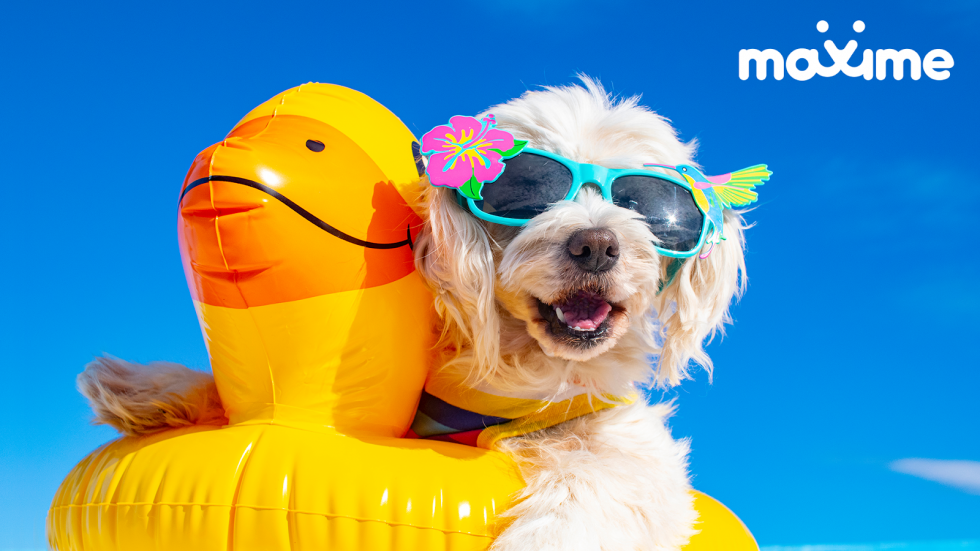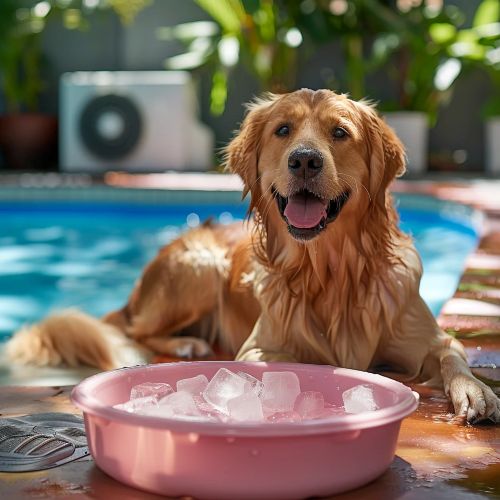Discover essential dog safety and summer dog care tips for 2025. Learn how to keep your dog cool, hydrated, and safe from heatstroke and sun damage.
Introduction
Summer is a wonderful time to enjoy the outdoors with your furry friend. However, dog safety during hot weather is a serious concern that every pet owner must prioritize. Rising temperatures and intense sun exposure can quickly lead to heat exhaustion or heatstroke, which can be life-threatening for dogs. Whether you’re planning long walks, beach trips, or backyard fun, knowing how to keep your dog cool and comfortable is vital.
In this comprehensive 2025 guide, we’ll share proven summer dog care tips designed to protect your pup from heat-related dangers. From dog hydration and sun protection to recognizing warning signs and creating a safe environment, these insights will help you ensure your dog stays happy and healthy all summer long.
Summer Pet Tips include keeping your pet hydrated, avoiding walks during the hottest part of the day, and never leaving them in a parked car. Provide shade, use cooling products, and apply pet-safe sunscreen if needed. Regular grooming can also help pets stay cooler and more comfortable during the summer heat.

Keep Dog Cool by ensuring they have constant access to fresh water, shaded areas, and cool surfaces to rest on. Avoid walks during peak heat hours, and use cooling mats or frozen treats to help lower their body temperature naturally.
Dog Sun Protection is crucial during hot summer months. Use vet-approved pet sunscreen on exposed areas like the nose, ears, and belly. Limit direct sun exposure during peak hours (10 a.m. to 4 p.m.), and provide shade or UV-protective clothing when outdoors. This helps prevent sunburn and reduces the risk of skin damage or overheating.
Prevent Heatstroke in dogs by avoiding outdoor activities during peak heat, providing constant access to cool, fresh water, and ensuring they have a shaded or air-conditioned space to rest. Watch for signs like excessive panting, drooling, or lethargy. Use cooling mats or vests, and never leave your dog in a parked car—even for a few minutes.
Why Dog Safety in Summer Matters
Unlike humans, dogs do not sweat through their skin to cool down; instead, they pant and sweat through their paw pads. This makes them more vulnerable to overheating, especially breeds with thick coats or short noses. Proper dog heat safety measures help prevent dehydration, heatstroke, and other serious conditions.
Understanding Heat Risks for Dogs
What is Heatstroke?
Heatstroke is a dangerous rise in body temperature that overwhelms a dog’s ability to cool down. Signs include excessive panting, drooling, weakness, vomiting, and even collapse. Immediate veterinary care is crucial.
Which Dogs Are Most at Risk?
- Brachycephalic breeds (e.g., Bulldogs, Pugs)
- Senior dogs and puppies
- Dogs with thick fur coats
- Overweight dogs
- Dogs with respiratory or heart conditions
Essential Dog Safety Tips for Summer 2025
1. Keep Dog Hydrated
Proper dog hydration is the foundation of summer safety.
- Provide fresh, cool water at all times.
- Carry portable water bottles and collapsible bowls during walks.
- Offer ice cubes as treats to help cool down.
- Avoid sugary or caffeinated drinks.
2. Time Walks and Outdoor Play Wisely
- Exercise early in the morning or late in the evening when temperatures are cooler.
- Avoid mid-day heat when the sun is strongest.
- Stick to shaded paths or grassy areas instead of hot pavement.
3. Use Dog Cooling Products
- Cooling mats and vests absorb heat and provide relief.
- Portable fans and misting sprays can help lower body temperature.
- Frozen toys or treats offer fun and cooling benefits.
4. Provide Sun Protection
Dogs can get sunburned, especially on the nose, ears, and belly.
- Use pet-safe sunscreen approved by your vet.
- Limit direct sun exposure during peak hours (10 a.m. – 4 p.m.).
- Consider UV-protective dog apparel or wide-brimmed hats.

5. Never Leave Your Dog in a Hot Car
Even a few minutes inside a parked car can be fatal. Temperatures inside a vehicle rise rapidly, causing heatstroke in minutes.
6. Create a Cool Space at Home
- Provide shaded areas outdoors.
- Use fans or air conditioning indoors.
- Place water bowls in multiple locations for easy access.
7. Watch for Warning Signs of Heatstroke
Symptoms include:
- Excessive panting or drooling
- Red or pale gums
- Vomiting or diarrhea
- Weakness or collapse
If you notice these signs, move your dog to a cool place, offer water, and seek immediate veterinary care.
Real-World Example: How One Family Prevented Heatstroke
The Smith family noticed their Labrador, Max, panting heavily on a summer hike. They stopped in the shade, offered water, and used a cooling vest. Max recovered quickly, avoiding a dangerous situation. This illustrates the importance of preparation and vigilance in hot weather dog care.
Dog Safety Checklist for Summer 2025
| Task | Recommended Action |
|---|---|
| Hydration | Fresh water available at all times |
| Walk Timing | Morning or evening only |
| Sun Protection | Apply pet-safe sunscreen, provide shade |
| Car Safety | Never leave dog unattended inside vehicle |
| Cooling Products | Use mats, vests, and frozen treats |
| Warning Signs Monitoring | Check for heatstroke symptoms regularly |
| Vet Checkups | Ensure vaccinations and health checks are current |
Bonus: What’s New in 2025 for Summer Dog Safety?
- Smart collars with temperature and hydration monitoring sensors
- Improved pet-safe sunscreens with natural ingredients
- Advanced cooling vests using phase-change materials for longer cooling duration

FAQs About Dog Safety in Summer
1. How can I tell if my dog is overheating?
Look for rapid panting, drooling, red gums, weakness, or vomiting. If you suspect heatstroke, cool your dog immediately and seek vet help.
2. Can all dogs wear sunscreen?
Only use pet-safe sunscreen. Avoid human sunscreen which may contain harmful ingredients. Apply to vulnerable areas like the nose and ears.
3. How often should I give my dog water during a walk?
Offer water every 15-20 minutes during exercise, or sooner if your dog shows signs of thirst or overheating.
4. Are cooling vests effective?
Yes, cooling vests can help lower body temperature, especially during outdoor activities or heatwaves.
5. Can dogs get sunburned indoors?
Indirect sunlight can cause mild sunburn in sensitive areas. Always provide shade and limit window exposure during peak sun hours.
Internal and Outbound Links
- For detailed nutrition tips, visit the American Kennel Club’s Nutrition Guide.
- Learn more about heatstroke prevention at PetMD’s Heatstroke Prevention Guide.
- Check out Humane Society’s Summer Pet Care Tips.
Conclusion
Summer fun with your dog is priceless, but dog safety must come first. By following these practical summer dog care tips in 2025, you can confidently keep your pup cool, hydrated, and protected from heat-related risks. Remember, awareness and preparedness are key to a happy, healthy dog all season long.
Have your own summer dog care tips? Share them in the comments below and help other pet parents keep their pups safe!



